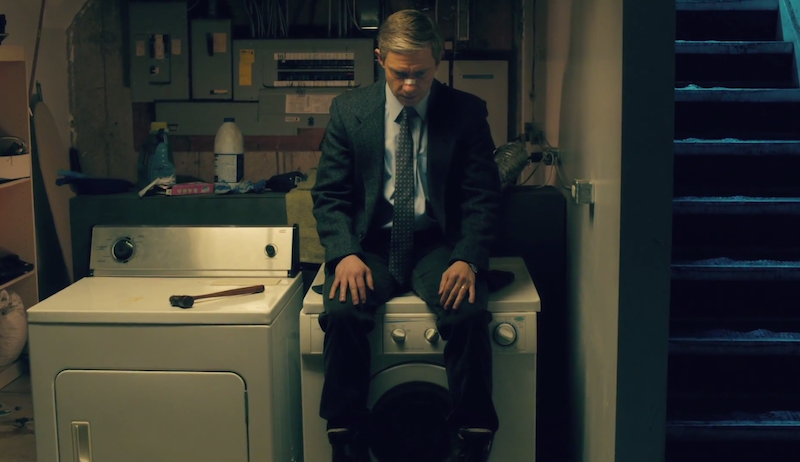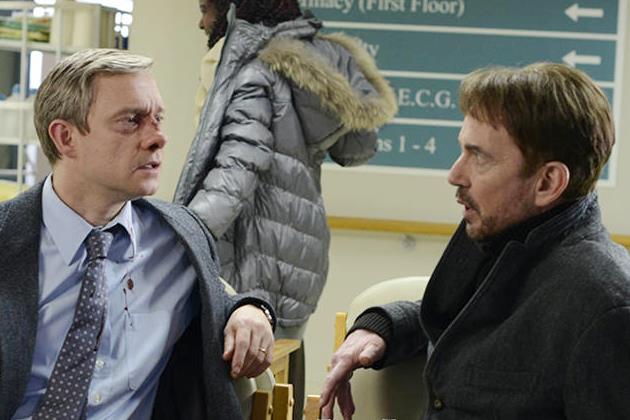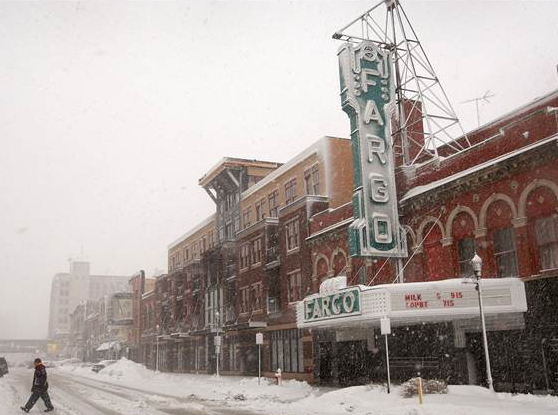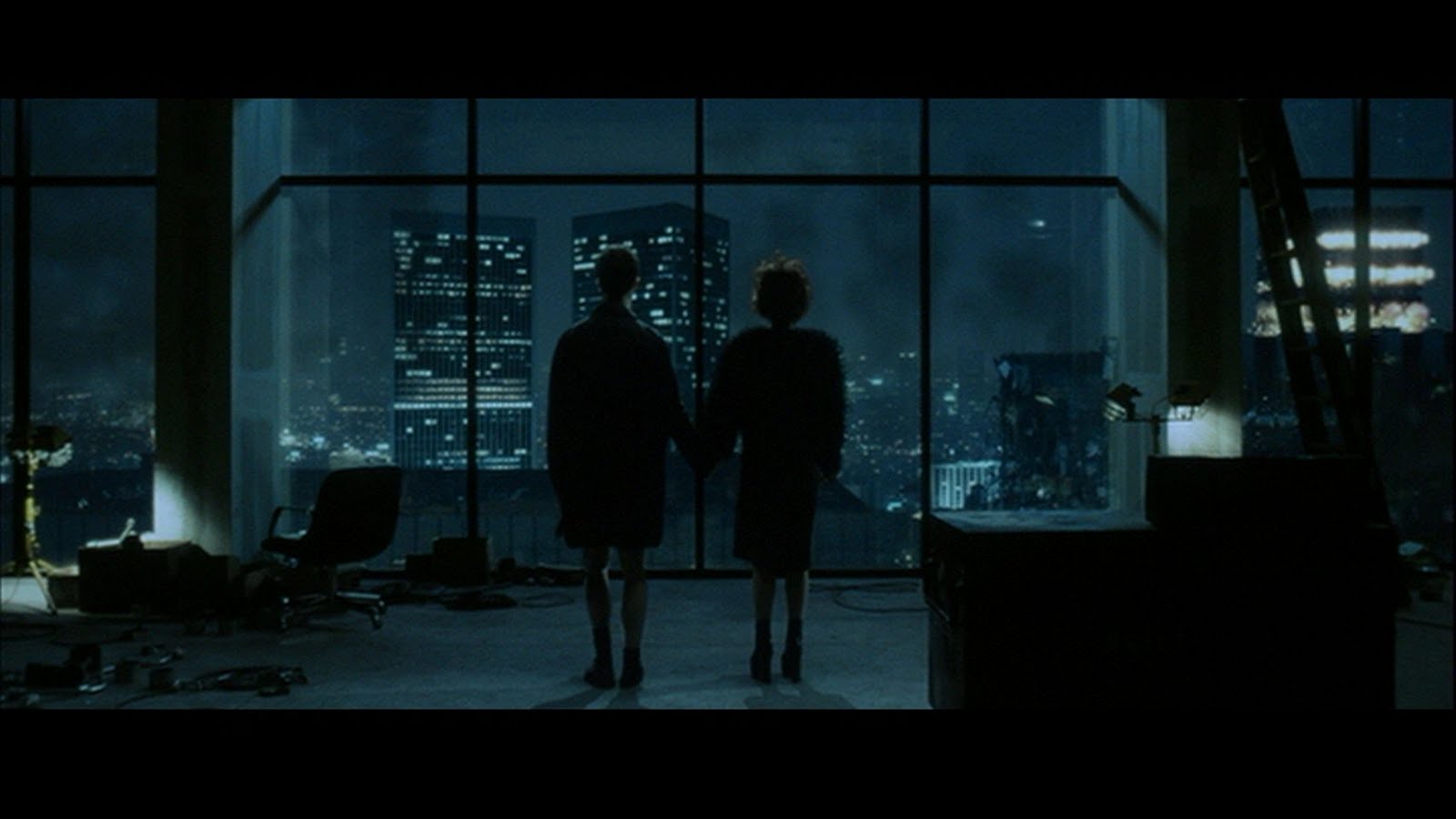This gemstone of a movie is the Nicholas Cage performance I’ve been yearning for all my life, and Nick’s visceral knowledge of cinematic vampires and his explosive charisma shines like a dark evil ruby throbbing at the heart of it. Nike captures the creepy otherworldiness that makes the early expressionist horrors so eternally haunting. Nike taps his vampire past from ‘Vampire’s kiss,’ Nick demurs a magnetically handsome and lugubrious Bela Lagosi, a bit of Babadook, and well, I could likely go on forever, such is the depth and panache of Nicholas Cage’s Dracula. You love him and fear him and despise him all at the same time, your heart, your gut, and your brain are all flummoxed by him.
The visual motifs are gorgeous and expressionist with Kung-Fu Hustle style hyper-gore comedy. Delicious villains, villains who revel in their villainy, who enjoy it, and of course psycho gangsters are going to team up with a wealthy, enduring, and magnetically handsome Prince Of Darkness, they already are vampiric, as all the cops are corrupt but one, so like Dracula’s village where he is Count, it is a community corruption. Dracula despoils the world around him like a plague and a curse, dancing in the ruins as he feeds off the misery and asserts his control to keep it that way. It’s amazing how Nicholas cage makes you viscerally FEEL this evil, to see it in his every movement and expression, yet he’s so beautiful doing this he’s hypnotising.
Renfield is Dracula’s bug eating servant, a debased servile familiar bound with evil like Golem to his Precious. The premise is akin to ‘What We Do In The Shadows’, vampires from the familiar’s perspective, but being in the original Universal Monsters Universe, ‘Renfield’ taps the mainline vampire iconography, and delivers it with a masterful romantic, comedic, action thriller extravaganza.
Dracula’s familiar Renfield is played by the both charming and endearing Nicholas Holt, a dope who fell for Dracula’s trap, losing his family and his soul to Dracula’s evil appetite. Not all vampires are wrapped up in Christianity, but Dracula is, and modern Renfield finds church run support groups to begin staving off Dracula’s terrible grip over him. Renfield gains super power by eating bugs, which he figres makes no sense, except that it does. Dracula is the source of his power, and just like Dracula feeds off of the innocence of his victims, he also feeds off of Renfield’s humiliation and debasement, so Dracula made his power activator the debased eating of bugs. Like the lady says in the clip when Renfield grabs that ant farm from some kid and starts chugging ants an sand to power up to fight off the assault force pouring in, “You’re a bad man Mr. Renfield.”
But yes, sometimes it is useful to be bad.
Awkwafina plays a great loud mouthed cop, the only one not on the gangster payroll, whose tender side really shines through in her chemistry with Nicholas Holt. And she’s a natural with badass gun moves. She’s the paladin hero of the story, by force of integrity, and turns Renfield away from Dracula. At movie’s start, the bishop exorcizing Dracula fails to turn Renfield because he rests his authority on the church, which is corruptible, and so Renfield frees Dracula to kill the vampire hunters.
This time, it is the spark of love and the integrity of the hero that turns Renfield against Dracula, and the integrity of the authority of truth, which Awkwafina embodies through her actions, dispels Dracula and his plague of corruption destroying the police force and the town. There is also a super breezy 21t century Christian church, speaking through the language of self-help with some pertinent relationship analysis, that wins Renfield away from Dracula, so it retains the Christian elements of the source material, while engaging both Christian and non-Christian 2023 audiences. Renfield becomes then a sort of Breaking Good, rather than ‘Breaking Bad’, a redemption story, of good triumphing over evil.
Renfield is cinematically firing on all cylinders, and this story approach, and Kung Fu Hustle style hyper action comedy, could very well open up the Universal Monster (UM) franchise. The UM’s last run at activating the franchise was the Tom Cruise ‘The Mummy’ and a few other big budget star studded titles. The concept didn’t gel, the idea being to make Monster icons into super hero figures robbed the deep moral codes at the heart these stories, making the premises confusing and at odds with the source material.
If a Renfield tone were taken for the other Universal titles of Wolfman, The Mummy, the reptile guy from the deep, we could see the franchise re-emerge. Nicholas Cage’s Dracula performance can anchor a franchise run, and this gives us a go at making these iconic embodiments of evil ooze with embodied evil like Nicholas Cage as Dracula. Once I saw Nike Cage as Dracula, I knew it was going to be awesome, and it exceeded my expectations.
Buy this movie so they make more.



















 Moral culpability is the foremost theme in the Fargo television series. In the first season, the characters embody extreme and complex moral attitudes brought out through stark oppositions.
Moral culpability is the foremost theme in the Fargo television series. In the first season, the characters embody extreme and complex moral attitudes brought out through stark oppositions. A contrasting villainy is found in Lester, one who puts up a front of innocence and victimhood, but who turns to betrayal and violence against even those who love and protect him. Lester’s framing his brother’s family is bad enough, but he reaches his greatest moral depravity in sending his second wife Linda to her death, even insisting she wear his jacket like a loving husband, but all to make her a better mark for Malvo. In this Lester is despicably Evil while Malvo is dangerously Evil, but has some moral boundaries while Lester has none.
A contrasting villainy is found in Lester, one who puts up a front of innocence and victimhood, but who turns to betrayal and violence against even those who love and protect him. Lester’s framing his brother’s family is bad enough, but he reaches his greatest moral depravity in sending his second wife Linda to her death, even insisting she wear his jacket like a loving husband, but all to make her a better mark for Malvo. In this Lester is despicably Evil while Malvo is dangerously Evil, but has some moral boundaries while Lester has none. Molly embodies moral fortitude, doggedly seeking the truth in a case all others have forsaken. She is in opposition to Lester, sniffing out his evil while he manipulates the small town relationships to cover his crimes.
Molly embodies moral fortitude, doggedly seeking the truth in a case all others have forsaken. She is in opposition to Lester, sniffing out his evil while he manipulates the small town relationships to cover his crimes. Molly is also in opposition with Bill Oswalt, who becomes sheriff and tries to scuttle her attempt to crack the case. Bill Oswald is willfully morally blind, he does not want to believe the people in his community, like Lester, are capable of horrible crimes. He becomes distraught at even the suggestion that such things are possible, preferring to blame roaming drifters for all the violence in his town. Bill’s revelation at the end destroys an innocence he clung desperately too, forced to see the factual actualities of human nature. He saw himself as good, preserving the peace and protecting his community, ie Lester, but it allowed, and even encouraged, so much more evil and violence to be perpetrated.
Molly is also in opposition with Bill Oswalt, who becomes sheriff and tries to scuttle her attempt to crack the case. Bill Oswald is willfully morally blind, he does not want to believe the people in his community, like Lester, are capable of horrible crimes. He becomes distraught at even the suggestion that such things are possible, preferring to blame roaming drifters for all the violence in his town. Bill’s revelation at the end destroys an innocence he clung desperately too, forced to see the factual actualities of human nature. He saw himself as good, preserving the peace and protecting his community, ie Lester, but it allowed, and even encouraged, so much more evil and violence to be perpetrated.
































